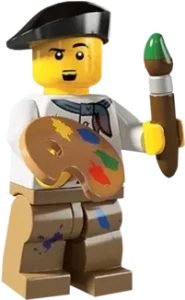15 Jun It’s Lonely at the Top
 A new study from UBS shows that nearly half (47%) of all American art museums focus on the top 4% of contemporary artists.
A new study from UBS shows that nearly half (47%) of all American art museums focus on the top 4% of contemporary artists.
Commercial art galleries are less biased, with only 23% focused on the top 4%.
Nonetheless, that means 96% of artists—the “emerging” ones—have little chance of seeing their work displayed in nearly half of America’s museums; and 77% have little chance of seeing their work displayed in nearly a quarter of America’s galleries.
“It’s no secret that the art world caters to a select few best sellers,” Hyperallergic notes.
While the statistics may seem daunting, the odds of an emerging artist getting into an art museum aren’t worse than the odds, say, of a student getting into Harvard or of a serviceperson becoming a Navy Seal.
It’s lonely at the top.
Getting an emerging artist’s work into a commercial art gallery is obviously easier; but galleries are quite picky, too, as they should be.
In the art world, money doesn’t talk, it screams. Commercial galleries only have so much “risk appetite.”
The reasons museums and galleries discount emerging artists’ work are several.
A lot of the art—even if professional—is derivative.
A lot is only decorative.
A lot is overt propaganda.
And a lot is purely kitsch.
Special interest groups—women, gay, Black and Latino artists—are complaining about the bias toward top-selling artists, claiming it smacks of systemic prejudice.
I’m not sure their complaints are justified.
When you consider all American museums and galleries, the emerging artist’s odds of acceptance look much better: 17% of museums display their works and 36% of galleries do.
To me, that seems fairly inclusive and welcoming of welcoming of emerging artists.
And as to whether there are gender and color biases working against emerging artists today, well, I doubt it.
You only have to leaf through any art collectors’ magazine to figure that out.
